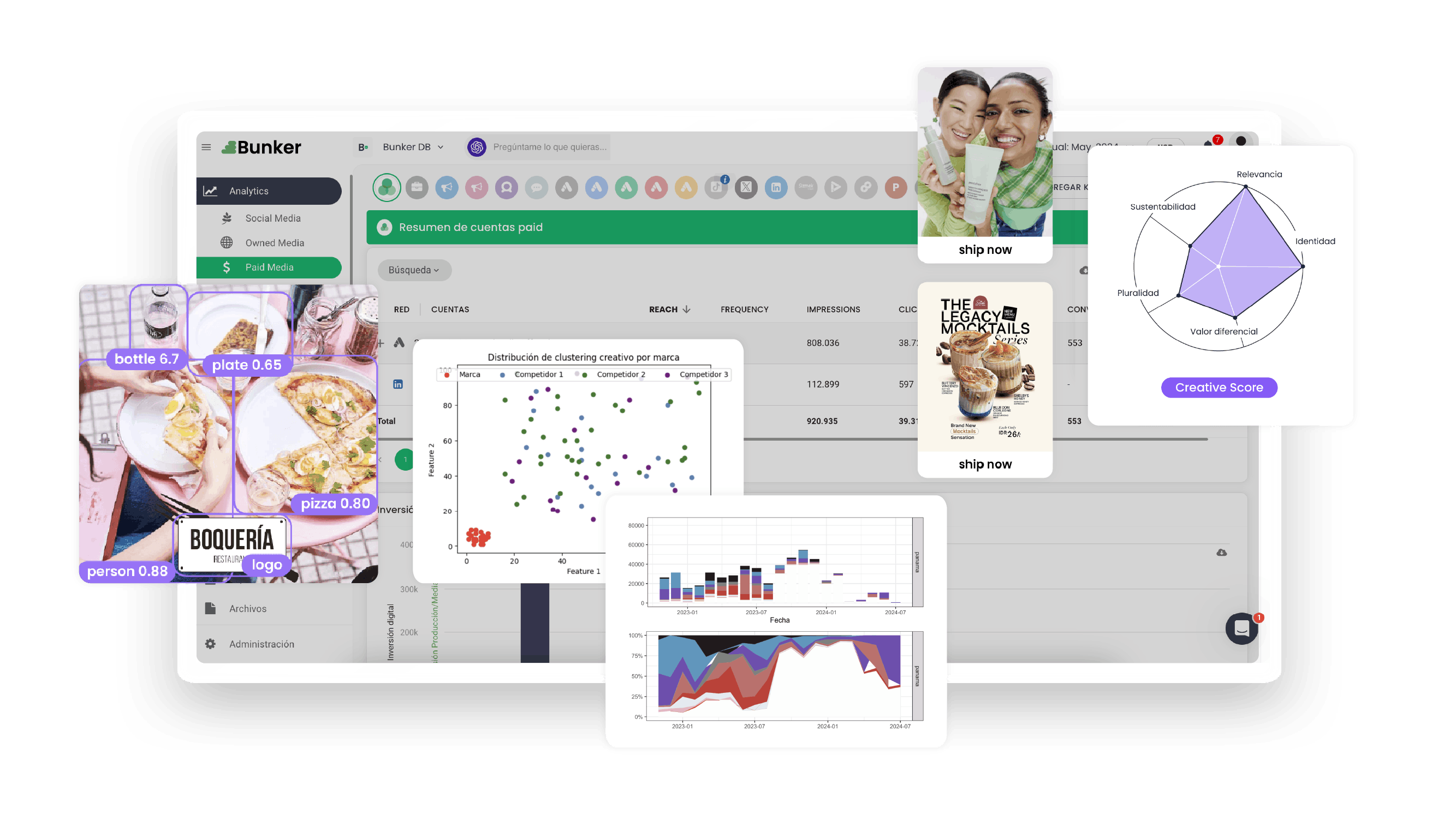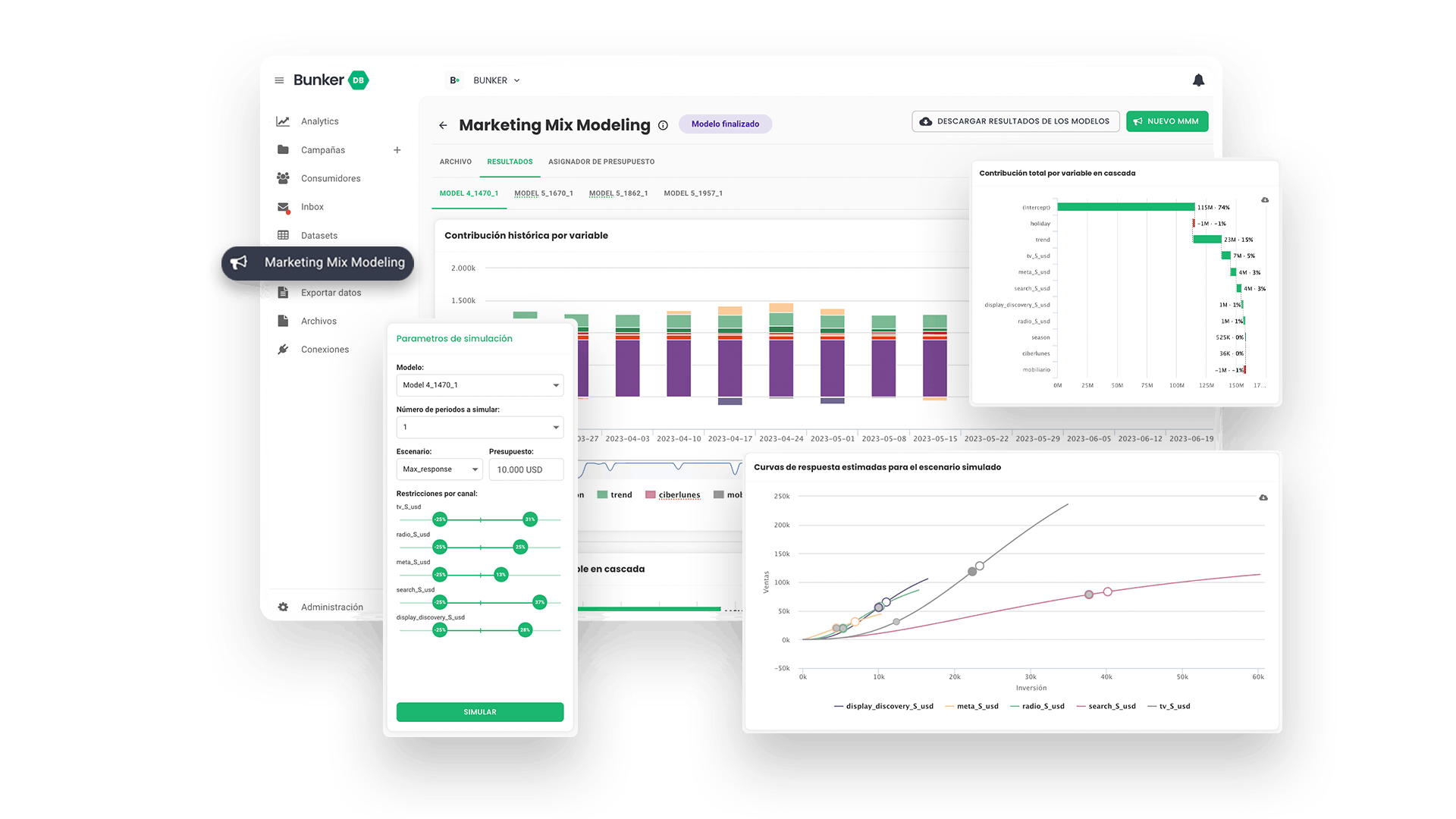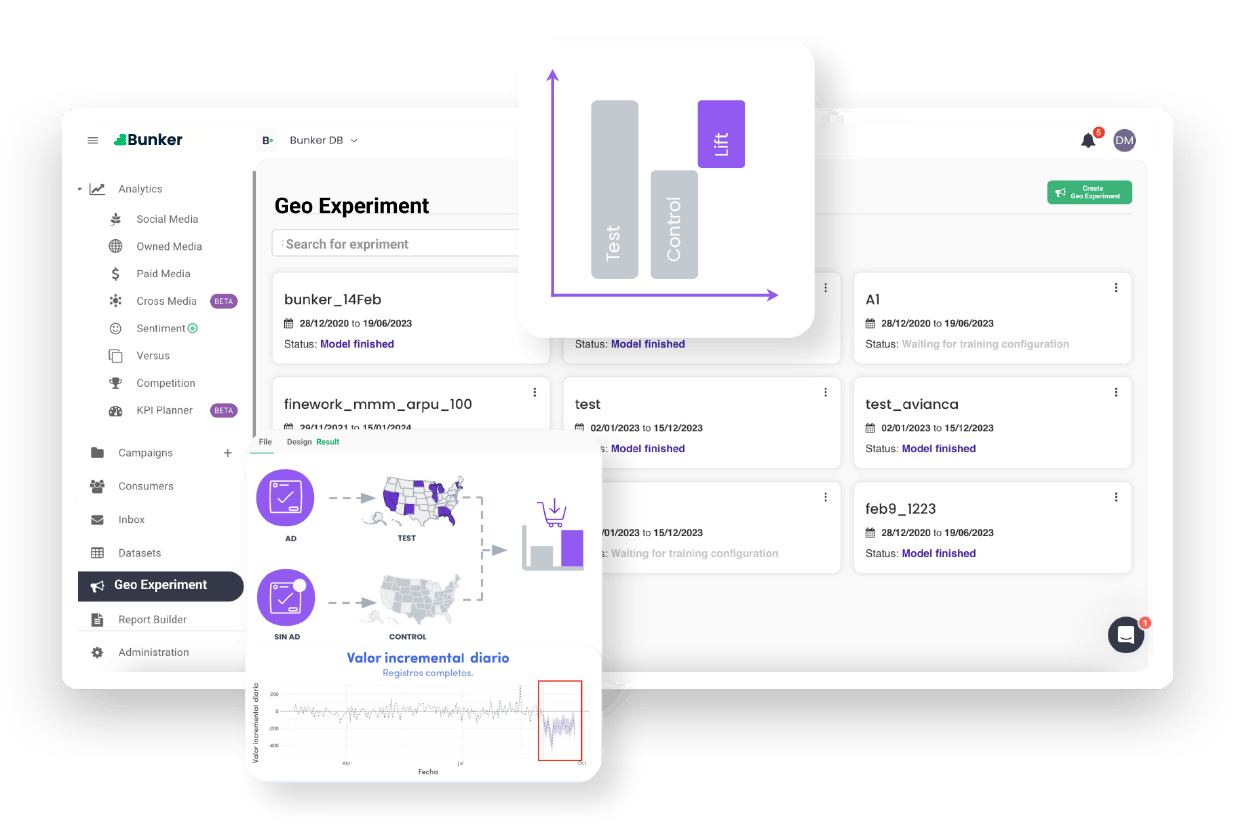Marketing Science
Our statisticians and data scientists develop cutting-edge products for the digital industry, such as Media Audit, Creative Audit, Marketing Mix Modeling (MMM), and Geolift, to enhance your insights and take your business strategies to the next level.

Discover the modules included on Marketing Science

Bunker DB adds value to traditional measurement methods with predictive and prescriptive analytics. Our technology unifies all data from a client's marketing ecosystem into an intuitive interface, facilitating omnichannel analysis. All this data can be connected to sophisticated analytical models, automating complex data analysis tasks for efficient analytical transformation.
We are experts in analytical transformation
We help brands from multiple verticals turn raw data into actionable insights.
1/5
Media Audit
Our media audit evaluates campaign performance against industry and market best practices to generate a branding/performance score, identifying multiple opportunities for improvement to become a leader in your category.

Creative Audit
Our creative audit statistically analyzes the characteristics and performance of your campaigns' creatives to answer business and brand strategy questions.

Marketing Mix Modeling (MMM)
Our MMM is a platform product based on econometric models that allows you to determine the incremental sales impact of all marketing efforts and their marginal return on investment (ROI) to optimize your media mix.

Geo-experimentation
Our geo-experimentation (or geolift) is a statistical method for designing robust tests that allow us to determine the causal impact of a geolocated marketing action, eliminating biases from other factors.

Why choose us as your measurement partner?
Trusted solution
Our technology, Bunker Analytics, automates data collection at record speed, enabling the development of robust, reliable, and long-term analytical transformations.

Seamless and friendly
Our technology is designed for both technical and non-technical users, removing barriers and democratizing data access for everyone on the team.

Constant innovation
Our solutions adapt to market needs in real time, enabling our clients to tackle complex challenges at any moment.

Tailored to every need
From pre-built models to customized solutions, we are a measurement partner that supports every phase of our clients' transformation journey.

Your ultimate solution for full funnel growth
Bunker Marketing Science empowers data analysts and data scientists from any brand to run smarter, faster, and with clarity. Our approach combines advanced analytics, full funnel analysis, and media mix modeling in one centralized view—designed for marketing decision-makers who want to prove, improve, and predict ROI across channels.
Request your free demo

resources
Reference material
Other
solutions
by PRODUCTS AND SERVICES









